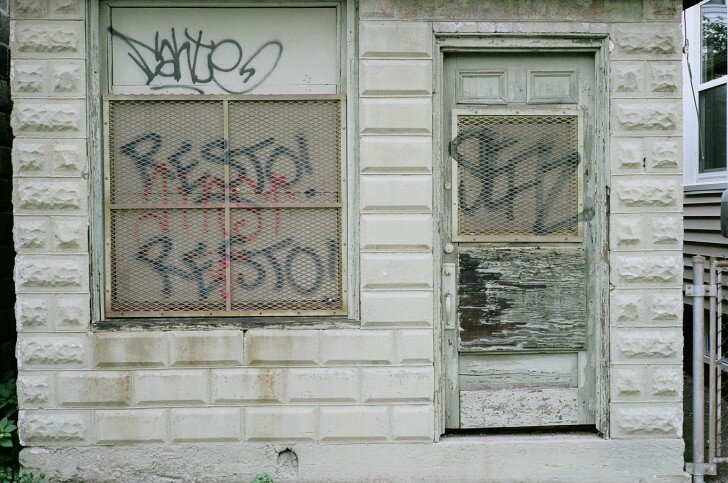
Chris Powell: Medical debt doesn’t vanish; graffiti causes hysteria
MANCHESTER, Conn.
Like the rest of the country, Connecticut is full of people who can't afford their hospital bills. These people may have medical insurance with high deductibles or have exhausted their coverage because of chronic ailments. While nobody is going to prison for medical debt, it can impair credit records and hold people back in life, especially people who were poor to begin with.
Hospitals are often ready to sell the least collectible of their patient debts for a tiny fraction of their nominal value. So with its new budget state government is joining a movement to extinguish the medical debts of people who probably will never be able to repay them. The budget include $6.5 million for distribution to nonprofit organizations that buy medical debt from hospitals and then cancel it. Advocates of the appropriation, including Gov. Ned Lamont, think it might eliminate as much as $650 million in medical debt to hospitals in Connecticut.
While this undertaking is well worth a try, journalism about it has been superficial to the point of misleading. For the debt involved here isn't really being eliminated at all, merely transferred. Indeed, in effect the debt already has been transferred back to the hospitals that have been carrying it. It has been built into hospital operating costs and is being recovered either through efficiencies at the hospitals or higher charges to medical insurers and patients who pay for themselves.
Like nearly everything in medicine, medical-debt-elimination programs are mechanisms of cost shifting. Medical insurers negotiate lower rates with hospitals, causing them to reduce costs or shift them to the less insured. The federal government medical-insurance programs, Medicare and Medicaid, pay less than what hospitals consider the full cost of treatment, and so hospitals must economize again or recover the government discounts with higher charges elsewhere.
Hospitals cannot operate at a loss for long, and if government wants them to stay in business, it has to subsidize them directly or indirectly, as by increasing government insurance payments. If government pays, then all taxpayers do, along with countries that buy the federal government's apparently infinite debt.
Medical care isn't ever really free, and medical debt can't simply be written off. Someone always will be paying for the people who don't pay. Such cost shifting is inevitable in any jurisdiction that won't let people die in the street, but it's not a magic wand.
Medical-debt elimination will be a boon to hard-luck cases and the poor, but it won't reduce the cost of medical care. It won't improve medical-insurance coverage. It won't lift anyone out of poverty. It will only recognize that many people remain poor.
While medical-debt elimination will repair some credit records, it won't prevent the same people from getting stuck with medical debt again. It also will make medicine a little more complicated and may even give people the idea that hospital bills are easily evaded if they hold out long enough. It will validate the principle articulated by the French economist Frederic Bastiat, who two centuries ago anticipated the modern world. Government, Bastiat wrote, is the great fiction by which everybody tries to live at the expense of everybody else.
One reason that the Connecticut General Assembly entertains many questionable proposals is the decline in journalism about the legislative process. Questionable proposals would die faster if local news organizations strove to do frequent surveys of legislators about their positions. As local news coverage has weakened, that kind of political journalism has disappeared.
Instead every other bit of graffiti and vandalism in Connecticut now is causing hysteria, being treated as the rebirth of the Ku Klux Klan or Nazi Party and a tidal wave of "hate" sweeping the state. Such was the case with the recent defacement of the Hartford street mural that celebrates the Black Lives Matter movement.
Perhaps glad to be distracted from murder investigations, Hartford police quickly found the culprit -- a local vagrant with a long criminal record and many pending charges. Since he's not Donald Trump, reporters didn't ask why he wasn't already in jail.
Chris Powell has written about Connecticut government and politics for many years. (CPowell@cox.net)
#medical debt
#Connecticut
#Chris Powell
William Morgan: For creative responses to the graffiti challenge
After a seemingly endless rampage of city-blighting graffiti, the mayor recently announced that the police had finally identified and charged the most notorious tagger who "soiled hundreds of walls and buildings." The alleged culprit could get two years in prison for defacing property, "which had to be cleaned using public funds."
Dumpster on Providence’s Smith Hill.
— All photos by William Morgan.
This was welcome news, as most citizens regard as vandalism the bubble signatures and symbols painted on blank walls, mailboxes, dumpsters, and electrical boxes. Some lawmakers, however, protested that graffiti was a minor issue, while one accused the mayor of cracking down on graffiti as "a way to forge political consensus."
The mayor, however, is not Jorge Elorza of Providence, but the mayor of Rome, Virginia Raggi, and the alleged tagger was identified as “Geco” (no full name given).
But whether it's Providence or the Eternal City, the problem of such urban defacement is old as human settlement. The ancient Romans battled it, as did the Egyptians centuries before that. During World War II, American G.I.s' painted “Kilroy Was Here’’ on walls from Anzio to Guadalcanal. Like the poor, graffiti will always be with us.
On Ives Street, in Providence’s Fox Point neighborhood.
Called tagging, painting your name in bold letters on the side of a building or a railroad car is about self-expression. Free spirits, the rebellious, and the disenfranchised tag their names to declare that they exist. According to Paolo von Vacaro, an authority on graffiti, "You tag your name to show that you are king of the street."
Competing artists lay their claims to a Providence wall.
As with many forms of self-expression, one man's creative genius is another's vandalism. One might admire the styles of particular graffitists, or how practitioners have artistic duels on public walls. But when the walls are historical, such as Providence Marine Corps of Artillery Arsenal, on Benefit Street, in a section of the city known for its historic architectural beauty, then graffiti is, according to the City of Providence, "a public nuisance and destructive of the rights and values of property owners as well as the entire community."
Defacing the Arsenal, the David Macaulay mural on I-95, or the Providence River pedestrian bridge is unacceptable. If residents and business are really stung by tagging, then they should push the city to get really serious about apprehending the spray-can brigade, and mete out fines stiff enough to cover the restoration of damaged walls and objects.
But how much of a public nuisance is the run-of-the-mill graffiti that covers so many walls, particularly in less affluent neighborhoods? Does it threaten the commonweal? Does painting freight cars make them less efficient? Or are the giant bubble letters symbolic of deeper strains within the community?
Masterpiece of railroad freight car graffiti.
Visual pollution is as unfortunate as it is indefinable: a certain building may enhance or offend, one man's Christmas lights may seem tacky to his neighbors. Graffiti, like smut (the late Supreme Court Justice Potter Stewart declared that he could not define smut, but knew it when he saw it), may be impossible to eradicate.
One of many injury law billboards.
If we are to tackle a city's visual pollution, why not eradicate the billboards that are a blot on the cityscape? As soon as you pass border signs admonishing you to “Discover Beautiful Rhode Island,’’ there are billboards touting one personal-injury law firm after another. (A traveler crossing Rhode Island for the first time might wonder if we do nothing here but chase ambulances)
Rocky and Bullwinkle mural visible from the train, by a 21st-Century Leonardo.
Why not a creative solution for the Creative Capital? If graffiti is a fact of city life, why not embrace it? The destruction of property should be discouraged by strict law enforcement, but the vibrancy of famous artist-provocateurs such as Banksy and Jean-Michel Basquiat should be encouraged. Why not embrace it?
How about hosting a graffiti conference and contest, where local talent and free-spirited geniuses from all over America would come to compete for a national title? Blank walls on warehouses, factories, and other structures would be donated. Providence businesses could sponsor walls, the Rhode Island School of Design could offer a residency for certain artists, and there could be conferences on tagging, along with publications, and maybe even art-school scholarships for disadvantaged would-be artists. Such an event could boost the city on many levels.
Many free-spirited paint bandits might balk at the contra-indication of control, so they would have to continue their vandalism as outlaws. But in the spirit of the successful Gravity Games of 1999-2001, let’s plan for some post-COVID-events that encourage fun, artistic energy, and above all, optimism.
“If your graffiti is exceptional, thank your art teacher’’ says my wife, Carolyn Morgan. Graffiti mural on North Main Street by Jasper Summers..
William Morgan is a Providence-based architectural historian, essayist and photographer. His latest book is Snowbound: Dwelling in Winter










